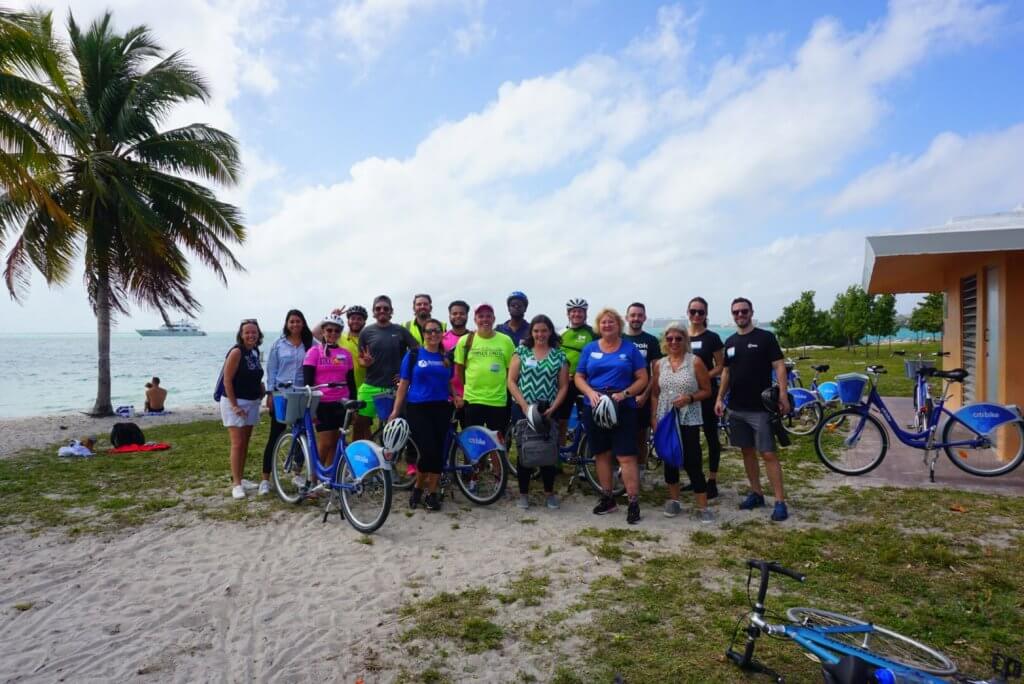In February, I had the pleasure of representing Eco-Counter as a sponsor and exhibitor at the 2022 Safe Streets Summit in Miami, Florida. It was a great opportunity to network and be inspired by Floridians who are committed to creating vibrant communities.
In this post, I share my takeaways from the Summit and how automated counting programs can help shape the cities of the future.
The Safe Streets Summit
In its 9th year, the Summit is the largest event in Southeast Florida dedicated to promoting active transportation, complete streets — streets designed to enable safe use and support mobility for all users — and creating livable communities.
Planners from the State agencies, counties and municipalities attend the event each year to discuss how to transform streets into welcoming, safe places for all modes of transportation. This year, the focus was on the impacts of climate change. With rising sea levels threatening cities in Southern Florida and across the world, we urgently need to change how we plan and develop our urban systems.

Quentin with other participants during one of the field trips during the 2022 Safe Streets Summit (Photo: Miami-Dade Transportation Planning Organization)
Takeaways from the Summit
The way we think, feel, and interact with public space is changing dramatically. If streets were once only spaces for transporting people and goods, they’ve now become places for human relationships and thriving communities. Walking and biking are catalysts for community life, so qualifying and quantifying the use of public space is now an urban planning imperative.
Planning processes, design standards, and operational schedules for public spaces must be adapted to accommodate and support the new functions and users of public spaces. This raises critical questions: How do we get a sense of how things are changing? How do we keep track of change itself? And how can we measure the success of our initiatives?
In addition to all the changes that were already underway, the COVID-19 pandemic led to a worldwide increase in walking and cycling. This raised the practical question of whether existing facilities could comfortably and safely accommodate the growing number of active mobility users — and keep them coming.
How counting systems can make cities more resilient and streets safer
-
Justify investments in safe streets
With before-and-after counts after street retrofits, planners can use increases in pedestrian and cyclist counts to justify the investment. That’s what the Canadian city of Kelowna did in 2020 after converting its main street into a pedestrian zone. In the long term, city managers can combine count data with other indicators, such as a public survey, to analyze the effectiveness of the changes. Read the Kelowna case study.
-
Track progress
Vision Zero is an approach to planning and designing the transportation system that aims to eliminate all traffic fatalities and serious injuries while improving safe and equitable mobility. It was first developed in Europe in the 1990s and gained popularity across North America in the last decade. Count data can play a critical role in tracking progress, for example, by fusing it with collision datasets to develop and calculate risk exposure indices. Our Data Services team examined this in Vancouver and the results are included in this study with the Canadian Association of Physicians for the Environment.
-
Assess fairness of street space distribution by mode
Quantifying the distribution of road space between pedestrians, cyclists and vehicles helps identify and address imbalanced patterns to make streets more welcoming and safer for all users. Our study Whose Street is it anyway? is a practical example of this in Montreal, Canada.
These are just a few examples of the many ways we collect and analyze count data to improve street safety and create more people-friendly, vibrant communities. Check out Eco-Counter’s service applications to learn more!
About the author:
Quentin Freixo is a client consultant at Eco-Counter. Passionate about systems engineering and road safety, he holds a degree in civil engineering from McGill University and a master’s in transportation, infrastructure and logistics from Delft University of Technology. After working for seven years in Europe and North America in transportation planning and engineering for both corporate and non-profit organizations, he now works with Eco-Counter to help planners make their cities safe and sustainable.







Il n'y a pas encore de commentaires